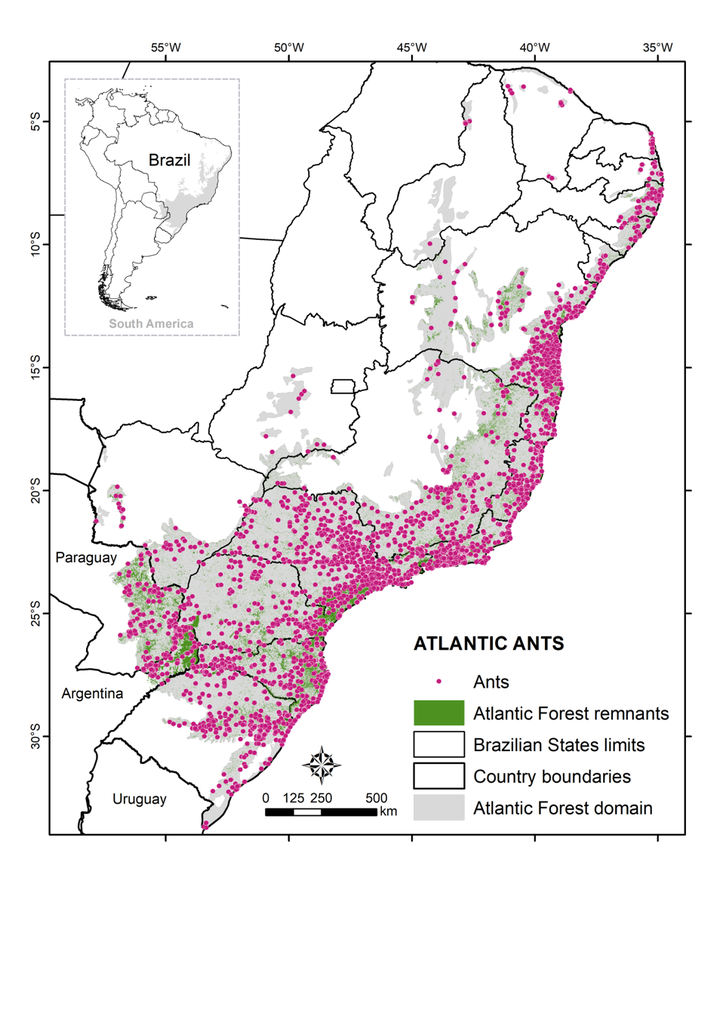ATLANTIC ANTS: a data set of ants in Atlantic Forests of South America

Abstract
Ants, an ecologically successful and numerically dominant group of animals, play key ecological roles as soil engineers, predators, nutrient recyclers, and regulators of plant growth and reproduction in most terrestrial ecosystems. Further, ants are widely used as bioindicators of the ecological impact of land use. We gathered information of ant species in the Atlantic Forest of South America. The ATLANTIC ANTS data set–which is part of the ATLANTIC SERIES data papers–is a compilation of ant records from collections (18,713 records), unpublished data (29,651 records), and published sources (106,910 records; 1059 references), including papers, theses, dissertations, and book chapters published from 1886 to 2020. In total, the data set contains 153,818 ant records from 7,636 study locations in the Atlantic Forest, representing 10 subfamilies, 99 genera, 1,114 ant species identified with updated taxonomic certainty, and 2,235 morphospecies codes. Our data set reflects the heterogeneity in ant records, which include ants sampled at the beginning of the taxonomic history of myrmecology (the nineteenth and twentieth centuries) and more recent ant surveys designed to address specific questions in ecology and biology. The data set can be used by researchers to develop strategies to deal with different macroecological and regional-wide questions, focusing on assemblages, species occurrences and distribution patterns. Furthermore, the data can be used to assess the consequences of changes in land use in the Atlantic Forest on different ecological processes. No copyright restrictions apply to the use of this data set, but we request that authors cite this data paper when using these data in publications or teaching events.